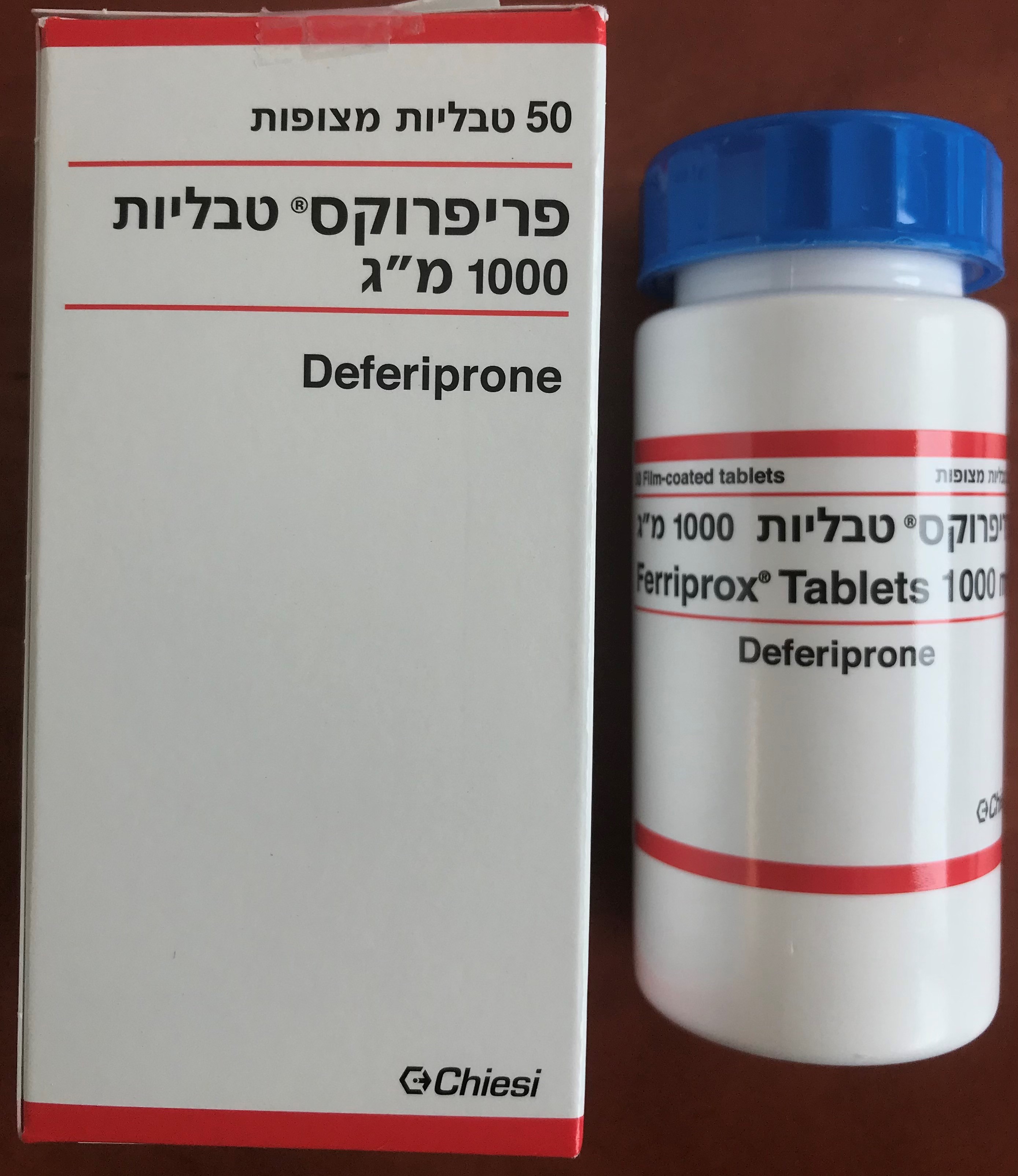Quest for the right Drug

פריפרוקס טבליות 1000 מ"ג FERRIPROX TABLETS 1000 MG (DEFERIPRONE)
תרופה במרשם
תרופה בסל
נרקוטיקה
ציטוטוקסיקה
צורת מתן:
פומי : PER OS
צורת מינון:
טבליות מצופות פילם : FILM COATED TABLETS
עלון לרופא
מינוניםPosology התוויות
Indications תופעות לוואי
Adverse reactions התוויות נגד
Contraindications אינטראקציות
Interactions מינון יתר
Overdose הריון/הנקה
Pregnancy & Lactation אוכלוסיות מיוחדות
Special populations תכונות פרמקולוגיות
Pharmacological properties מידע רוקחי
Pharmaceutical particulars אזהרת שימוש
Special Warning עלון לרופא
Physicians Leaflet
Adverse reactions : תופעות לוואי
4.8 Undesirable effects Summary of the safety profile The most common adverse reactions reported during therapy with deferiprone in clinical trials were nausea, vomiting, abdominal pain, and chromaturia, which were reported in more than 10% of patients. The most serious adverse reaction reported in clinical trials with deferiprone was agranulocytosis, defined as an absolute neutrophil count less than 0.5 x 109/l, which occurred in approximately 1% of patients. Less severe episodes of neutropenia were reported in approximately 5% of patients. Tabulated list of adverse reactions Adverse reaction frequencies: Very common (≥1/10), Common (≥1/100 to <1/10), not known (cannot be estimated from the available data). SYSTEM ORGAN CLASS VERY COMMON COMMON FREQUENCY NOT (≥1/10) (≥1/100 to <1/10) KNOWN Blood and lymphatic system Neutropenia disorders Agranulocytosis Immune system disorders Hypersensitivity reactions Metabolism and nutrition Increased Appetite disorders Nervous system disorders Headache Gastrointestinal disorders Nausea Diarrhoea Abdominal Pain Vomiting Skin and subcutaneous tissue Rash disorders Urticaria Musculoskeletal and connective Arthralgia tissue disorders Renal and urinary disorders Chromaturia General disorders and Fatigue administration site conditions Investigations Increased liver enzymes Description of selected adverse reactions The most serious adverse reaction reported in clinical trials with deferiprone is agranulocytosis (neutrophils <0.5x109/l), with an incidence of 1.1% (0.6 cases per 100 patient-years of treatment) (see section 4.4). Data from pooled clinical studies in patients with systemic iron overload show that 63% of the episodes of agranulocytosis occurred within the first six months of treatment, 74% within the first year and 26% after one year of therapy. The median time to onset of the first episode of agranulocytosis was 190 days (ranged 22 days- 17.6 years) and median duration was 10 days in clinical trials. A fatal outcome was observed in 8.3% of the reported episodes of agranulocytosis from clinical trials and post- marketing experience. The observed incidence of the less severe form of neutropenia (neutrophils <1.5x109/l) is 4.9% (2.5 cases per 100 patient-years). This rate should be considered in the context of the underlying elevated incidence of neutropenia in thalassaemia patients, particularly in those with hypersplenism. Episodes of diarrhoea, mostly mild and transient, have been reported in patients treated with deferiprone. Gastrointestinal effects are more frequent at the beginning of therapy and resolve in most patients within a few weeks without the discontinuation of treatment. In some patients it may be beneficial to reduce the dose of deferiprone and then scale it back up to the former dose. Arthropathy events, which ranged from mild pain in one or more joints to severe arthritis with effusion and significant disability, have also been reported in patients treated with deferiprone. Mild arthropathies are generally transient. Increased levels of serum liver enzymes have been reported in some patients taking deferiprone. In the majority of these patients, the increase was asymptomatic and transient, and returned to baseline without discontinuation or decreasing the dose of deferiprone (see section 4.4). Some patients experienced progression of fibrosis associated with an increase in iron overload or hepatitis C. Low plasma zinc levels have been associated with deferiprone in a minority of patients. The levels normalised with oral zinc supplementation. Neurological disorders (such as cerebellar symptoms, diplopia, lateral nystagmus, psychomotor slowdown, hand movements and axial hypotonia) have been observed in children who had been voluntarily prescribed more than 2.5 times the maximum recommended dose of 100 mg/kg/day for several years. Episodes of hypotonia, instability, inability to walk, and hypertonia with inability of limb movement, have been reported in children in the post-marketing setting with standard doses of deferiprone. The neurological disorders progressively regressed after deferiprone discontinuation (see sections 4.4 and 4.9). Reporting of suspected adverse reactions Reporting suspected adverse reactions after authorisation of the medicinal product is important. It allows continued monitoring of the benefit/risk balance of the medicinal product. Any suspected adverse events should be reported to the Ministry of Health according to the National Regulation by using an online form https://sideeffects.health.gov.il

פרטי מסגרת הכללה בסל
התרופה תינתן בהתאם למפורט להלן: א. התרופה תינתן לטיפול בעודף ברזל בחולי תלסמיה מייג'ור. ב. התרופה לא תינתן בשילוב עם DEFERASIROX.
מסגרת הכללה בסל
התוויות הכלולות במסגרת הסל
| התוויה | תאריך הכללה | תחום קליני | Class Effect | מצב מחלה |
|---|---|---|---|---|
| התרופה תינתן לטיפול בעודף ברזל בחולי תלסמיה מייג'ור. |
שימוש לפי פנקס קופ''ח כללית 1994
לא צוין
תאריך הכללה מקורי בסל
01/03/2008
הגבלות
תרופה מוגבלת לרישום ע'י רופא מומחה או הגבלה אחרת
יצרן
APOTEX INC., CANADAבעל רישום
LAPIDOT MEDICAL IMPORT AND MARKETING LTDרישום
163 83 35170 00
מחיר
0 ₪
מידע נוסף
